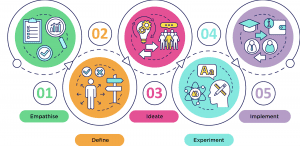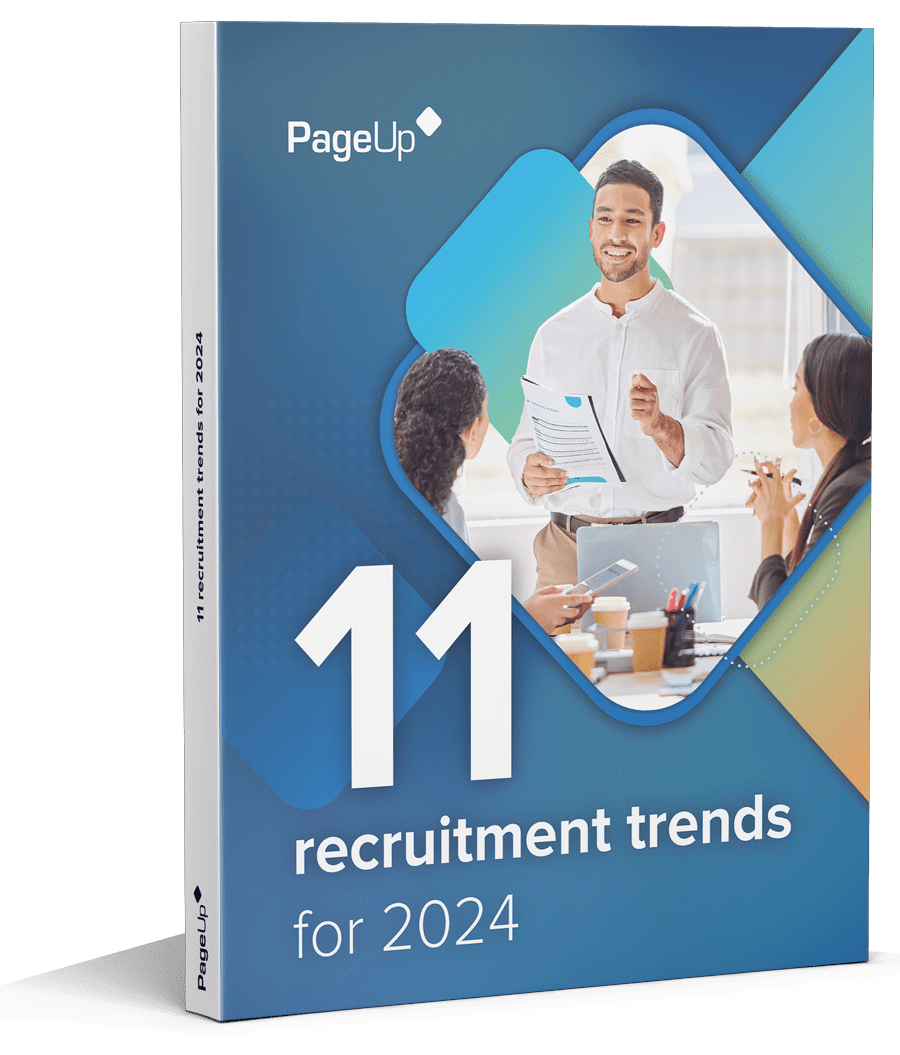UX Episodes is a monthly event at PageUp hosted by the Design & UX team.
We wanted to find a way to share our design ethos with the whole company, introduce them to the way we solve problems and give them some tools they can take back and use in their day to day lives, inside and outside of work.
If you believe in the power of design to change the trajectory of the organisationorganization, you best find a way that people outside of design can access those skills.
Rather than one-on-one coaching or talks (which we already do), we wanted to create an environment where people feel connected to our design team, where they can learn, share experiences and ask questions.
For our first session, we started with an introduction to Design Thinking. We shared our experience using Design Thinking at PageUp and other organisationsorganizations, talked about our learnings, challenges, and how we overcome them.
About 50 people in person and online from different departments across the business joined the session. They had some excellent questions, and all agreed that they were interested in skills-building workshops.
What we discussed
Design Thinking: The briefest history
Design Thinking as a term dates back to the early ’90s. It gained popularity through the design consultancy IDEO who took the theory of design thinking, applied it in a business context and shared their process openly with the world. This eventually led to the creation of the d. School at Stanford University and the proliferation of Design Thinking throughout the business world, which is still very strong today.
What did we cover in the episode?

The Design Thinking process has five stages to help you gather as much learning as you can before building and implementing a solution.
Empathise – arguably the most crucial part of Design Thinking is putting people at the centre of your entire process. To do this, you need to be in constant contact with your audience. This stage is when you uncover the hidden context around behaviours, attitudes, processes and tasks that need to be completed. It’s always surprising how many assumptions we make about our audience and how illuminating even brief conversations can be. So make sure you are curious and open-minded when going into this stage. Ask a lot of open-ended questions and be prepared to learn new things you never thought of.
Here’s a collection of projects from strategic design agency Paper Giant that have empathy at their core: (https://www.papergiant.net/work)
Define – during the define stage you’re taking all of the information you have uncovered while empathising with your audience, categorising and synthesising it down to problem statements. When doing the Empathise stage correctly, you will uncover a number of problem statements. You will need to refine each one of them to a single problem that your audience is encountering. The problem statement needs to be specific enough that you can measure the impact of your solution. Be careful not to recommend a specific solution in the problem statement itself.
Ideate – in the ideation stage, you and your team will take your defined problem statement and generate as many ideas as you can to try and solve this problem. Unlike brainstorming, ideation is a structured process that focuses on increasing your team’s creativity and generating a large number of ideas in a few rounds during the session. Ideation works best with a diverse group of people in the room from different roles, backgrounds and perspectives. This way, everyone’s unique views are being heard, and you move away from the first idea that pops into your head to the most valuable solution that solves the actual problem.
Experiment – this stage is all about validating or disproving the hypotheses around your idea/s with your target user. Putting people at the centre of your work reduces the risk of creating a solution that has no market fit and will not be used. Experiments help you learn, solve disagreements, and test ideas quickly and cheaply. There are various methods that can be used, like A/B testing, Prototyping, The Wizard of Oz methods, and many more. As long as you design your experiment around people’s behaviour and not opinions and capture the data correctly, you can choose any method that works for you best.
Implement – we believe that there is never a “Done” stage when using Design Thinking. You should always revisit and iterate on your solution to make it better and maximisemaximize the adoption of your product. Even if the experimentation results were very positive, you still want to work iteratively, and use the Build, Measure, Learn loop. It means that you and your team need to decide on what will be the Minimum Viable Product (MVP) that you want to get into the market as soon as possible. This way, you spent a short amount of time building the minimum that you need to provide value to users, and learn from it. You want to have many small releases where you capture the data and learn from each release and make decisions on how to progress based on those learnings.
Key things to remember
- Design Thinking is NOT a linear process. You should have checkpoints during each step to understand if you have enough confidence to move to the next one. If you don’t, you can and should go back to the relevant previous step and do it again.
- It’s important to remember that though this process can be perceived as long, it actually reduces a lot of time and waste. It’s very valuable to gather as much learning as you can before building and implementing a solution, so you know you are investing your time, money and effort in the right thing.
What’s next?
This leads us to the topic for UX Episode #2: Employee Experience Ideation Workshop
We want to demonstrate the value of the Design Thinking process while making our participants feel engaged and interested. We have decided to collaborate with our Talent team around the problem space of ‘Employee Onboarding Experience’, and run an ideation workshop with many people from around the organisation.
Stay tuned for our next UX Episode.
Fresh insights for HR
Stay up to date with HR trends, tips and more when you sign up for our industry newsletter





